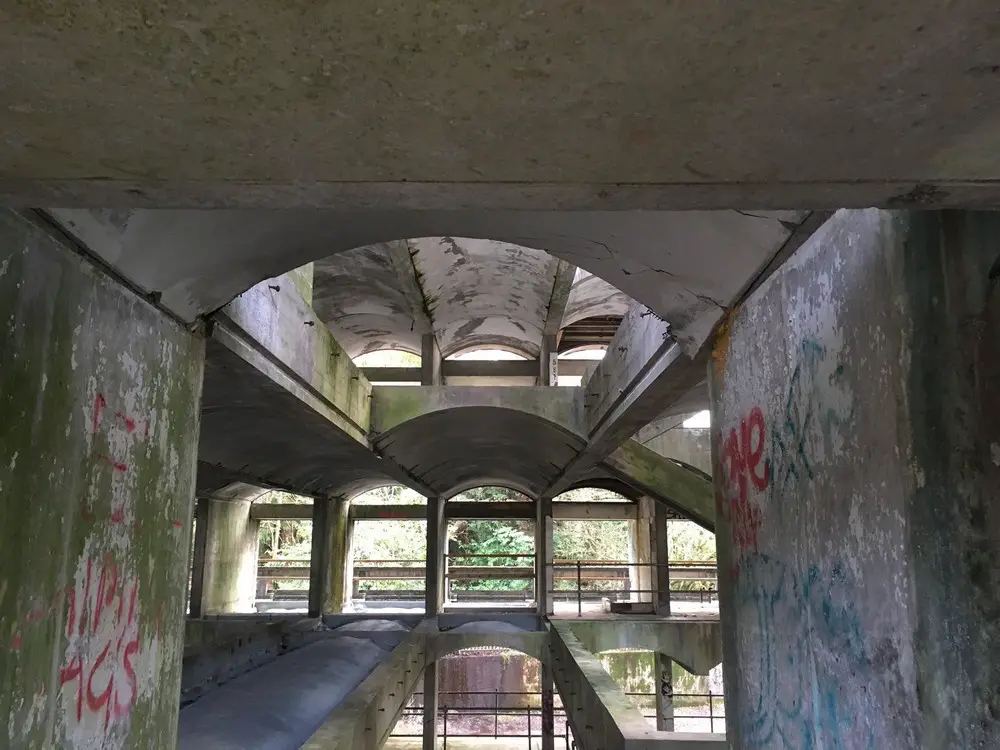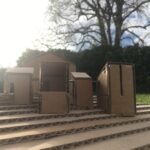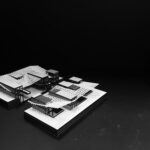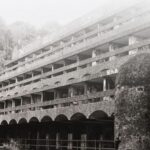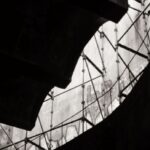Saint Peter’s Seminary Cardross Study Conclusion, Modern Scottish Architecture, Architectural Education Dissertation
Saint Peter’s Seminary Cardross Building Study Conclusion
29 November 2021
Third Year Architectural Dissertation by Daniel Lomholt-Welch, Scotland
Daniel Lomholt-Welch
Architecture MA(Hons) Dissertation
Saint Peter’s Seminary Cardross Building – Conclusion
Conclusion
In setting out the objectives of this dissertation it is hoped that through a combination of historical, theoretical and primary source material, it is possible to arrive at a series of understandings of Saint Peter’s. In journeying through this material these understandings represent certain ways of framing the Seminary, each framing as a singularity in constant relation to the others. By adopting a holistic standpoint, it is possible to build up a perspective of Saint Peter’s as the synthesis of these framings.
The first of these framings is encountered within Christian Norberg-Schulz’s theory of genius loci, or ‘spirit of place’. Angus Farquhar highlights the strength of genius loci within Saint Peter’s, as well as how elements such as the fractured altar can enhance this through their materialities. However, the theory struggles to deal with the depth of narrative that the Seminary holds and fails to truly encapsulate its spirit in one single essence. It is contended that Saint Peter’s has no single spirit, but multiple spectres.
This theme is continued in the investigation of Jean-Luc Nancy’s singular plural, in the context of the disembodiment of the Seminary. The liminal existence of Saint Peter’s, being positioned between mind and body, is explored through this dialogue. The exchange between the theory and the architecture leads to the correlation that both constitute that which they are antithetical to. Nancy’s singular plural, which counteracts wholeness, is found to be whole in its counteraction. Likewise, Saint Peter’s is considered as a building which is in a constantprocess of disembodiment, leading to the conclusion that it is embodied in its disembodiment.
The journey continues by addressing how Martin Heidegger’s theory of the fourfold can be seen in the light of the Seminary. Saint Peter’s poses questions of the theory, challenging the power of Heidegger’s fourfold to be able to reform itself, evolve and develop within a changing context. Again, the altar is a central point of this discussion. While its fragmentation could be seen as damaging the purity of Heidegger’s fourfold, it has also inadvertently led to some, such as Angus Farquhar, to experience the space in a more profound way. Notions of idolatry concerning the space are also encountered, leading in to the following two chapters which focus on the personal meanings held within the space.
In chapter four, Mircea Eliade’s conception of sacred space sets up a dichotomy between how religious and profane people experience space. This dualism is explored within the context of Saint Peter’s, a building that holds varying conceptions of sacred space. In assessing the traces of sacredness that linger around the space, Father Hugh Kelly’s interview is critical to this debate. Eliade’s polarity is challenged by the Seminary, being postulated not as a religious or profane space, but as a space of experience.
The final chapter engages with the results of the survey, studying the ways in which people react to the building. Ed Hollis’ interview elucidates the varying ways in which the building can evoke a certain reaction, an evocation which has fluctuated with the Seminary’s existence. In tandem with the experiences recorded in the survey, this portrays the variation in how Saint Peter’s is experienced.This develops into a discussion between the concepts of the sublime and the numinous, tying into the previous chapter’s debate on sacred space. These nebulous ideas are contextualised within Saint Peter’s, highlighting their subtle differences and the complex relationship they have to one another.
Throughout this journey there is repeated engagement with plurality, and discussion with dichotomies. Saint Peter’s plays an active role in challenging dualisms and totalities during the journey, and therefore challenges the way in which they portray the Seminary. By charting the experiences of thos who have visited the Seminary, various understandings have been reached which have each attempted to consider Saint Peter’s in different ways. By evaluating them in correlation to one another it is hoped that a novel perspective of the Seminary can be obtained.
Bibliography
Further reading that was indirectly influential.
Blundell Jones, Peter. Architecture and Ritual: How Buildings Shape Society. London: Bloomsbury, 2016.
Canmore. ‘Cardross, St Peter’s College.’ Accessed August 4, 2020. https://canmore.org.uk/site/113509/cardross-st-peterscollege
e-architect. ‘St Peter’s Seminary, Cardross.’ Accessed August 3, 2020. https://www.e-architect.com/scotland/st-peters-seminary-cardross
Gauthier, Francois. ‘Rave and religion? A contemporary youth phenomenon as seen through the lens of religious studies.’ Studies in Religion 33, no. 3 (Autumn 2004): 397-413. https://journals-sagepub-com.ezproxy.is.ed.ac.uk/doi/pdf/10.1177/000842980403300307
Glendinning, Miles. Rebuilding Scotland: The Postwar Vision. Edinburgh: Tuckwell Press, 1997.
Grigor, Murray. ‘Space and Light.’ Filmed June 1972 at St Peter’s Seminary, Cardross. Video, 20:21. https://www.youtube.com/watch?v=5K8d2n1j-ak
Hart, Tom. ‘The raver’s Brigadoon.’ Discovering Britain, February 3, 2015. geographical.co.uk – link broken, noted 31 May 2022.
Metzstein, Isi, and Andy MacMillan. “Designing St Peter’s Seminary, Cardross.” Interviewer unknown. BAHighLife, October 1, 2014. Video, 3:18. www.youtube.com/watch?v=Zi1F-WEfQzAY – no longer available
BBC. ‘Modernist ruin given away by Catholic church after
years of decay.’ Accessed July 24, 2020. https://www.bbc.co.uk/news/uk-scotland-53530257?fbclid=IwAR0rFdnJmrMRXPdyuMWhshI7mJ7RTAcOjnIKF8-StmFD55CVEB1huSVIw24
NVA. ‘Hinterland.’ Accessed August 3, 2020. nva.org.uk/artwork/hinterland/ – offline when checked 2 Dec 2024, Ed.
Petersson, Anna. ‘Architecture in Secular and Post-secular Conditions. On the Aesthetics of Objectionable Matter.’ PhD Dissertation, KTH School of Architecture, 2012.
Margry, Peter Jan. ‘Secular Pilgrimage: A Contradiction in Terms?’ In Shrines and Pilgrimage in the Modern World: New Itineraries into the Sacred, edited by Peter Jan Margry, 13-46. Amsterdam: Amsterdam University Press, 2008.
‘Project Updates: St Peter’s Seminary.’ Hidden Glasgow Forums, Last modified August 1, 2020. http://www.hiddenglasgow.com/forums/viewtopic.phpf=15&t=90&sid=69b0d65f71f5d334239edf89c3ead097&start=330
Rodger, Johnny. Gillespie, Kidd and Coia 1956-87. Glasgow: RIAS, 2007.
‘Saint Peter’s Seminary, Cardross.’ Urban Glasgow, Last modified August 2, 2020. https://urbanglasgow.co.uk/saintpeters-seminary-cardross-t50-s10.html
Saint Peter’s Seminary Cardross Study – introduction
Saint Peter’s Seminary Cardross Study Part 1
Saint Peter’s Seminary Cardross Study Part 2
Saint Peter’s Seminary Cardross Study Part 3
Saint Peter’s Seminary Cardross Study Part 4
Saint Peter’s Seminary Cardross Study Part 5
Saint Peter’s Seminary Cardross Study Dissertation Conclusion by Third Year Student at Edinburgh School of Architecture information / images from Daniel Lomholt-Welch
Edinburgh School of Architecture Student Projects
Second Year Student Projects at Edinburgh School of Architecture
Second Year Student Projects at Edinburgh School of Architecture
First Year Student Projects at Edinburgh School of Architecture
First Year Student Projects at Edinburgh School of Architecture
Education Building Designs
New Macallan Distillery in Speyside
Design: Rogers Stirk Harbour + Partners (RSHP)
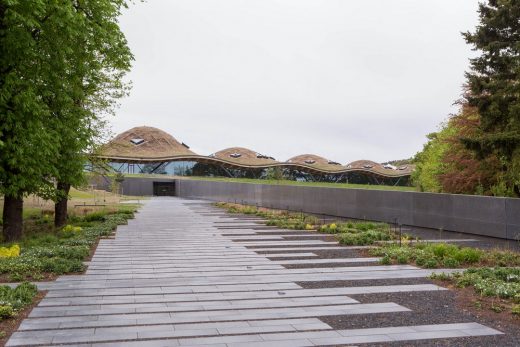
photo © Simon PricePA Wire
Comments / photos for the Saint Peter’s Seminary Cardross Study Conclusion – Third Year Architectural Dissertation by Daniel Lomholt-Welch page welcome

